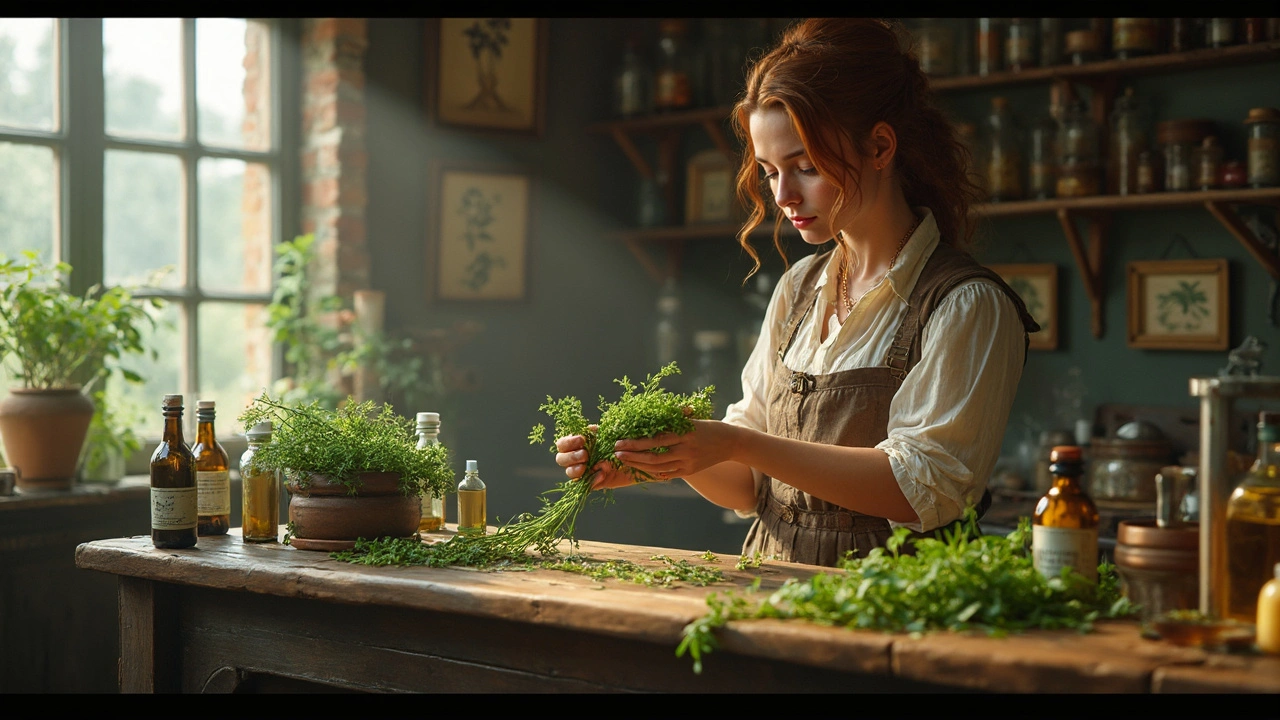Artemisia Annua – What It Is and Why People Use It
If you’ve heard the name artemisinin or artemisia annua, you probably know it’s a plant that’s been talked about for malaria. But the herb does more than just fight parasites. It’s a leafy green that grows in warm climates and has been used for centuries in traditional medicine. Today we’ll break down what makes this plant interesting, how people take it, and what to watch out for.
Top health benefits you should know
The biggest claim around artemisia annua is its anti‑malaria power. The compound artemisinin, extracted from the leaves, kills the malaria parasite in blood. Doctors worldwide use it as part of combination therapies because it works fast and reduces drug resistance.
Beyond malaria, many users say the herb helps with fever, inflammation, and even digestion. Some small studies point to antioxidant activity that could protect cells from damage. If you’re looking for a natural boost during flu season, a tea made from dried leaves might give a mild soothing effect.
How to take it safely
There are three common ways people use artemisia annua: dried leaf tea, standardized extracts (usually in capsule form), and liquid tinctures. Tea is the cheapest option – steep one teaspoon of dried leaves in hot water for 5‑10 minutes. Extracts give a more predictable dose of artemisinin, often listed as a percentage on the label.
When it comes to dosage, most experts suggest starting low. For extracts, 100‑200 mg of artemisinin per day is a typical range for adults. If you’re making tea, one cup a day is usually enough. Always read the product’s instructions and talk to a pharmacist if you take other medicines.
Pregnant or nursing women should avoid high doses because safety data are limited. People with allergies to plants in the Asteraceae family (like ragweed) might react, so try a tiny amount first.
Because artemisinin can interact with some prescription drugs – especially those processed by the liver’s CYP450 enzymes – it’s smart to check with your doctor if you’re on blood thinners, antiretrovirals, or anti‑cancer meds. The interaction risk is higher with concentrated extracts than with a mild tea.
Buying artemisia annua products online can be tricky. Look for brands that provide third‑party testing results and clearly state the artemisinin content. Cheap products without lab reports may contain fillers or lower potency, which defeats the purpose.
In short, artemisia annua is a versatile herb with proven anti‑malaria action and promising secondary benefits. Use it responsibly: start small, choose reputable sources, and keep your health provider in the loop. If you’re curious about trying it, a gentle tea is a low‑risk way to see how your body reacts before moving to stronger extracts.
Sweet Annie: Natural Wellness Benefits and Real Results for Your Healthy Lifestyle
Sweet Annie, also known as Artemisia annua, has exploded in popularity as a go-to natural dietary supplement. This article dives deep into its centuries-old use, modern applications, active compounds, and what real people are saying about their results. Get the facts—plus some handy tips for using it safely and effectively. Whether you're curious or skeptical, here's what you actually need to know about this ancient plant.
read more

